How We Test Gaming Headsets
Human Language, Animals & Movement
Male Vocals
Our test clip is a resounding "Yes, sir," similar to what you'd hear from a soldier in a testosterone-filled first-person shooter. So, we start by looking at the male voice's fundamental speech frequency, which has its lower end at about 150 Hz.
The overtone reproduction of the male voice lies between 1.5 and 3.5 kHz, which is what makes or breaks its timbre and unique characteristics. If this section of the spectrum is tampered with, voices lose their character, and spatial recognition suffers a lot.
The range between 3.5 and ~6.5 kHz is essential for determining how intelligible speech is. And depending on the voice's pitch, this region may even reach up to ~10 kHz. The sibilant sound is nicely visible in our spectrum analysis, with the drawn together "s" between "yes" and "sir."
In the range around 8 kHz, we also have breathing and air noises, which are especially important for whispered voices.
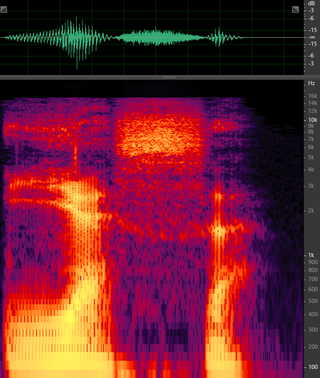
Female Vocals
Now, the fundamental frequency we're looking at is slightly higher, ranging between ~150 Hz and 450 Hz in the lower mid-range. Our previous assertions about overtone reproduction and sibilants, as well as speech recognition and breathing/air noises, apply here as well. The sibilant "s" sound at the beginning of the word "sugar," as well as measurable air noises, are easily recognizable.

In a direct comparison between neutral sound production and gaming headsets, good, linear headphones (almost) always win. A dip at 400 to 500 Hz has negative consequences for female vocals and long-barrel rifles. However, an overemphasis at ~8 to 10 kHz might slightly increase the perception of whispered words and low-intensity speech. This can just as easily be balanced with a neutral device and an equalizer, without punishing you with permanent peaks where they aren't necessary.
Jungle Noises With Animal Sounds
The sound of a jungle filled with four-legged sources is much more complex than human voices, occupying mid-range and higher frequencies.
Stay On the Cutting Edge: Get the Tom's Hardware Newsletter
Join the experts who read Tom's Hardware for the inside track on enthusiast PC tech news — and have for over 25 years. We'll send breaking news and in-depth reviews of CPUs, GPUs, AI, maker hardware and more straight to your inbox.
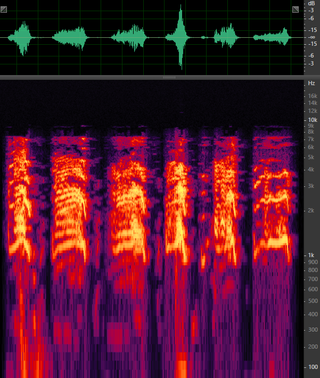
Walking On Gravel Outdoors
Small, sharp-edged stones rolling off, being compressed, and jumping away produce a delicate soundscape. The dominant sound ranges down to around 150 Hz, while highlights may reach up to 20 kHz (and higher). Consequently, a true-to-life reproduction requires the most linear curve possible. Any under- or over-emphasis has a strong influence on the sound's character.
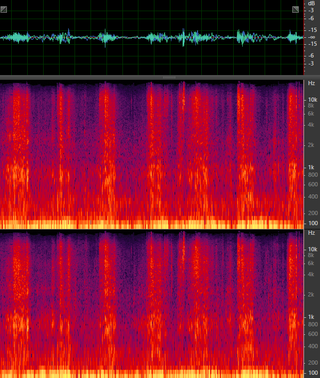
To illustrate this in more detail, both channels appear one on top of the other so that interaural time and level differences are more visible. Stones facilitate a readily apparent spatial impression, as this multitude of particles doesn't behave like a single source.
Walking On Solid Ground Indoors
The frequency band of the step itself is balanced between a range of ~180 Hz to 6 kHz, while highlights reach up to about 16 kHz. At the same time, the room creates more or less diffuse reflections, which are easily recognizable between the individual steps in our spectral analysis. Our example uses a garage with concrete flooring.
The basic impact sound is found at about 250 Hz, while the surround component of this echoic room extends from ~500 Hz to ~5 kHz. If aggressive sound design is used here, basements that are supposed to sound a bit muffled may seem too accentuated, while a large hangar may sound like a drainage pipe.
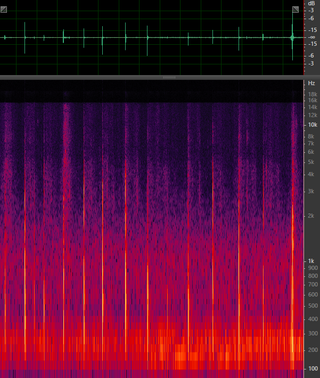
Walking On Snow
This is a broad-band sound that requires linear reproduction across the entire frequency range. If individual areas are missing, the ground may sound sandy or muffled. On the contrary, playback may become too accentuated, leaving a metallic impression.
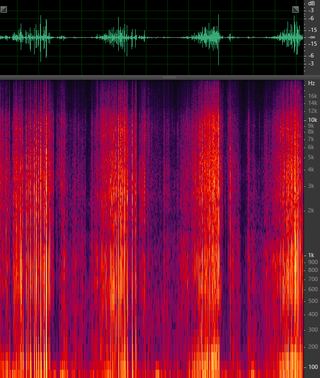
Walking On Grass
If the lower mid-range is missing, a sneaky sniper can sound more like a noisy infantry grunt. The primary frequency range only extends to ~1.5 kHz. Therefore, a balanced reproduction curve up to 2 kHz is particularly important.
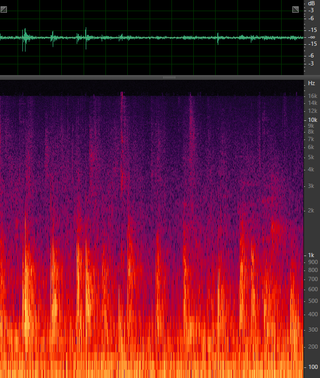
The fairy tale of allowing gamers to more audibly hear their opponents sneaking up through pricier headphones is nothing but a PR myth. After all, the frequencies generated by a wide variety of surfaces are just as diverse as the surfaces themselves, making it impossible to emphasize all of them in a meaningful way through sound design. The best solution is thus linear!
MORE: Best Deals
Current page: Human Language, Animals & Movement
Prev Page Sound Design: Marketing Gimmick Or Force Multiplier? Next Page Typical Vehicle & Combat Sounds-
the nerd 389 In the article, you say that headphones always create the perception that the source is right at the head. This is incorrect. Newer techniques use either binaural recordings or HRTF approximations to reproduce entire auditory spaces.Reply
When employed correctly, these techniques allow for a more accurate reproduction of an environment than is possible with speakers.
If surround headphones employ those techniques, the result is true 3D sound (two angles, as well as distance). That said, the technology needed to pull this off in real time is still a few years away. For now, binaural recordings are the only way to achieve this effect in practice.
Finally, you should probably disclose the output impedance of your sources. Many headphones have drastically different frequency and phase response between low impedance and high impedance sources. The effect is most pronounced with low impedance headphones, like most gaming headsets (<64 ohms). Motherboards and sound cards usually have a high output impedance (10-100 ohms), while decent headphones amps have low impedance (<2 ohms). -
Spanky Deluxe I just don’t get Tom’s Hardware sometimes. They go out of their way to make top quality articles with great testing methodologies but at the same time make the website absolute garbage to use with half the stuff covered in abnoxious adverts, a terrible UI experience and then even more adverts for even worse stuff that is blatantly obviously scam sites like “How local <ISP LOCATION AREA> housewife earns $15962 per month from home” and the like. Sometimes adverts even stop you reading an article on mobile, i.e. actually block you pressing the next page button. I hardly ever read articles anymore here despite being a visitor for about 20 years as it’s just too much hard work to wade through the website design and adverts everywhere.Reply -
icycool_q1 Completely agree Spanky, I am coming here less and less because of the huge video playing throughout almost every article. In addition to that, I have very poor internet and it takes considerable time for this crap to even load. Hell, I'd be happy to pay them $5/year just to have NONE of this extraneous rubbish.Reply -
Co BIY Tom's reviews headsets?Reply
No category under peripherals ? and I don't remember a recent review. -
FormatC This is the intro review to understand, what we test and how. The headset reviews will follow soon. I'm testing headsets for the German site since a few years (my latest). I think, it is a good compromise for the masses to get more info and to understand, what we write. Not too flat like an unboxing video on YT and and not too in-dept like for the golden ears. ;)Reply
Finally, you should probably disclose the output impedance of your sources.
If measure with an good external amp, not on an onboard output. But with exception of a few pilot headsets I wasn't able to find a gaming headset above 32 ohms.
Newer techniques use either binaural recordings or HRTF approximations to reproduce entire auditory spaces.
As I wrote in the review, all this techniques are using your brain (and experience) to produce this immersion. But it doesn't help to make a bad headset better or to hear "more". ;)
-
hannibal I agree the article. I have always have good Hi-Fi speakers and headphones. Many years back I did Also buy Gaming headset (expensive one) and used it a while and was deeply dissapointed by the sound quality. Did go back to old music Hi-Fi headphones and was much more pleased and the next time I did upgrade my music system I did by the best Hi-Fi music headphones that I could afford at that moment and have been really pleased the sound quality.Reply
Good bass even in low volume, good balance at low volume, same when you increase the volume upp. So balanced and straight linear sound in all situations!
The multidriver system is interesting, but very difficult to make right. Have to check out some uber models From Senheiser and othe big audio manufacturers to see how well They can do it with their best systems. -
the nerd 389 @FormatCReply
I didn't mean to imply that you should measure with a low impedance source. Quite the contrary, actually. Most people don't have headphone amps, so it doesn't make sense to measure with one if that's your audience. All I meant was that the output impedance has a substantial impact on how headphones measure, so it's worth disclosing. It only takes a few minutes to measure if you have a decent multimeter and a couple of resistors lying around.
Your Creative unit should have an impedance between 10 and 50 ohms. That's a big enough range that it's a pretty notable amount of uncertainty in any measurements you do with it, though. It's worth mentioning that of the units I've measured, I've found almost no difference in output impedance between onboard audio and gaming-oriented sound cards. Even the external ones usually have at least 10 ohms of impedance.
Regarding the binaural and HRTF techniques, it's not really fair to say that they use the brain/experience to produce the effect. They simulate a physical phenomenon that occurs when sound hits the outer ear and head. You can even measure the effect (assuming you can sit still long enough).
The wording you chose is akin to saying "the lights in your room allow you to see using your brain/experience to allow you to perceive objects." Again, it's not technically incorrect, but it's not really going to help anyone understand it any better. Also, I wouldn't mention it except for the fact that the HRTF is likely going to become a major factor in mainstream audio in the next few years. It's already used in some high-end audio solutions, and it's expected to be a major ingredient in the next phase of VR. -
FormatC I'm building audio systems since 1979 and I followed in the past each trend to understand (or very often not), what the industry and their PR tried to sell us. I'm visiting a lot of meetings and workshops and it is every time very interesting to hear, what scientists, engineers and medicals said. Alone the inner structure of a human ear is so complex, that we can found thousands of variances of a different spatial immersion. For one person this fakes are working well, for others not. Or simply different. I also saw a lot of blind tests and the results were every time within the statistic. A good 50:50 for stereo vs. artificial sound manipulations.Reply
What I would say with this small story is:
Never believe, what the industry said. This is (mostly) pure PR and the utilization of the term Gaming, only to sell their low-end more expensive, is pure nonsense. Stickers and audio labels are nonsense too. Money makers. Good audio hardware can cost a lot of money but our job must it be in the first row, to find the the better pieces between all this crap. What we will do is a thing in the middle of this mostly senseless unboxing YT videos and the Hi-Fi magazines. Call it science for the masses. But we have in each case to take care, that we will stay understandable for all readers. Not so easy... ;)
BTW: The Creative amp is running between 10 ohms and 600 ohms not bad. But I'm trying each headset also onboard (if it is not USB) to see, how it performs. I'm worked together with MSI for example to improve their mainboard audio solutions and a lot of other companies have now a bigger focus at the audio part of their mainboard design (components, positioning). This was also a follow of my investigations of all this VGA-related influences ("you can hear what you see") and the mainboard layout. The fact, that you can see now on a lot of VGA cards low pass filters for all rails is a direct follow of this work. Together with improved PSUs... ;) -
JonDol Reply20524062 said:... it’s just too much hard work to wade through the website design and adverts everywhere.
There are already long years since AdBlockers became mandatory on THW in order to have a pleasant reading experience. Don't wait anymore before installing a few (not only one since some of them have agreements with ad networks and sneakily whitelist some ads to let them reach you). I personally have at least 3 AdBlockers on every web browser I use.
-
Virtual_Singularity Reply20524205 said:Completely agree Spanky, I am coming here less and less because of the huge video playing throughout almost every article. In addition to that, I have very poor internet and it takes considerable time for this crap to even load. Hell, I'd be happy to pay them $5/year just to have NONE of this extraneous rubbish.
Hmmm... Totally, agree. Save for the $5 a year part. =P
Edit: Good article all the same, as it's an area Tom's hasn't breached much, at least yet, as far as I've seen (or heard). Like the contributor with the outstanding DL/UL speed in the sig hints at: "not too flat like an unboxing video, and not too in depth like for the golden ears". I like that description. Though I personally wouldn't mind a "golden ears" type of review. But then, that'd likely remove or disqualify most gaming headsets from the topic altogether, along with readers? Though just so Tom's knows, some of us would indeed take the time to read the in-depth, "golden ears" stuff. I grew up in the analog world and usually still prefer it, maybe. Ha.
Most Popular





